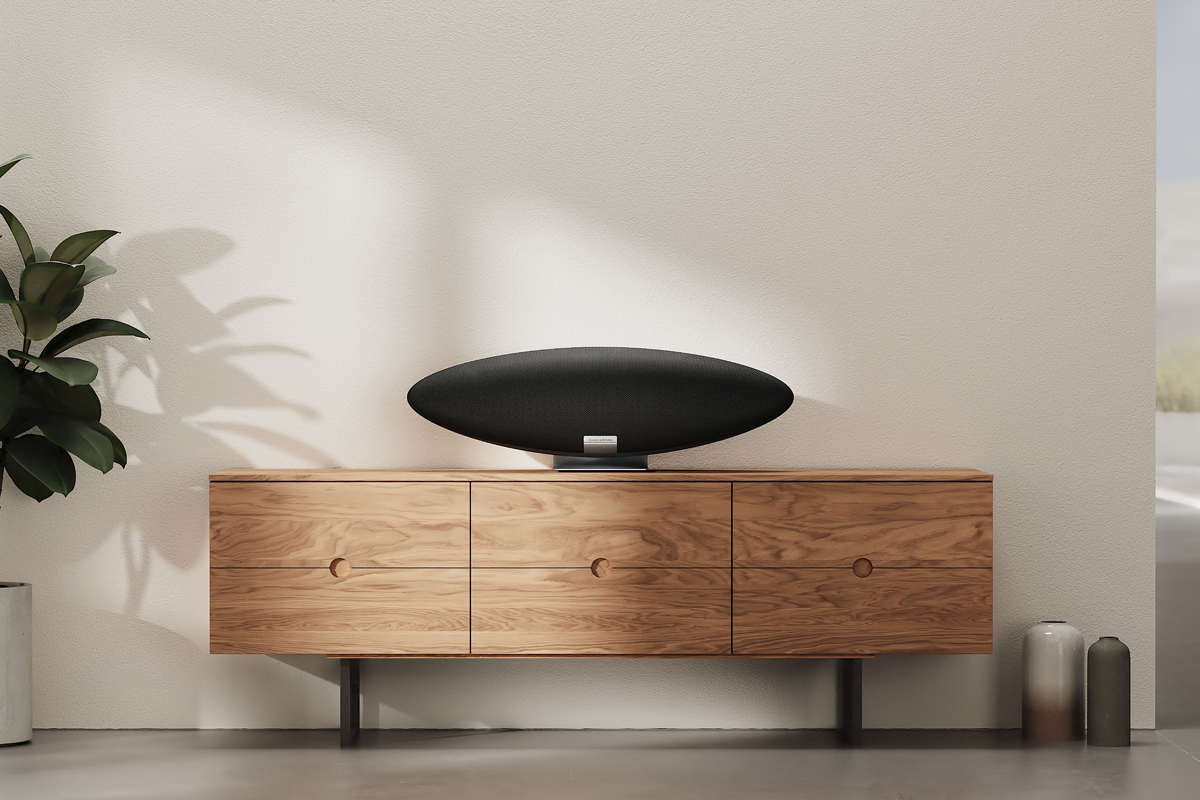If I had to name two products that laid the groundwork for Simplifi’d hi-fi, they’d be Apple’s iPod and Bowers & Wilkins’s Zeppelin iPod speaker. Before Apple launched the iPod in 2001, most people listened to their own music on physical media, one disc or tape at a time. The iPod let them store an entire music library on one pocketable device and play tracks at random.
While the Zeppelin wasn’t the first iPod speaker, Bowers & Wilkins was one of the first audiophile brands to offer such a product. Introduced in 2007, the Zeppelin speaker dock delivered serious hi-fi sound, with robust bass and a real stereo soundstage. The iPod was designed for headphones, and heavily marketed as such, but products like the Zeppelin proved that the iPod could be a serious source for out-loud listening. What followed was a wholesale shift in music consumption habits, from packaged media to downloads to streaming.
The original Zeppelin was superseded in 2011 by the Zeppelin Air, which added Wi-Fi and AirPlay support, and in 2015 by the Zeppelin Wireless, which eliminated the dock and added Bluetooth and support for Spotify Connect.
Last October, Bowers & Wilkins introduced a fourth-generation Zeppelin. Priced at $799 (all prices in USD), the new model reverted to the original name—simply “Zeppelin.” Designed for the streaming era, the new Zeppelin has Wi-Fi and Bluetooth aptX Adaptive, but no input or output jacks for connecting external components. It supports Apple AirPlay 2 and Spotify Connect. With the companion Bowers & Wilkins Music app, available for Android and iOS, you can play music from other streaming services, including Deezer, Qobuz, and Tidal. The app is required for setting up the new Zeppelin.
Another new feature is Alexa Built-in. As with any Alexa smart speaker, you can give a command or ask a question, and Alexa will do your bidding.
Inside and out
Measuring 25.6″W × 8.3″H × 7.6″D and weighing 14.3 pounds, the new Zeppelin has the same iconic shape as its predecessors. My review sample had the Midnight Grey finish—almost, but not quite, black. The Zeppelin is also available in a lighter Pearl Grey finish. The front is covered in a woven grille cloth, and the back is hard plastic. Low down on the front is a metal Bowers & Wilkins badge.
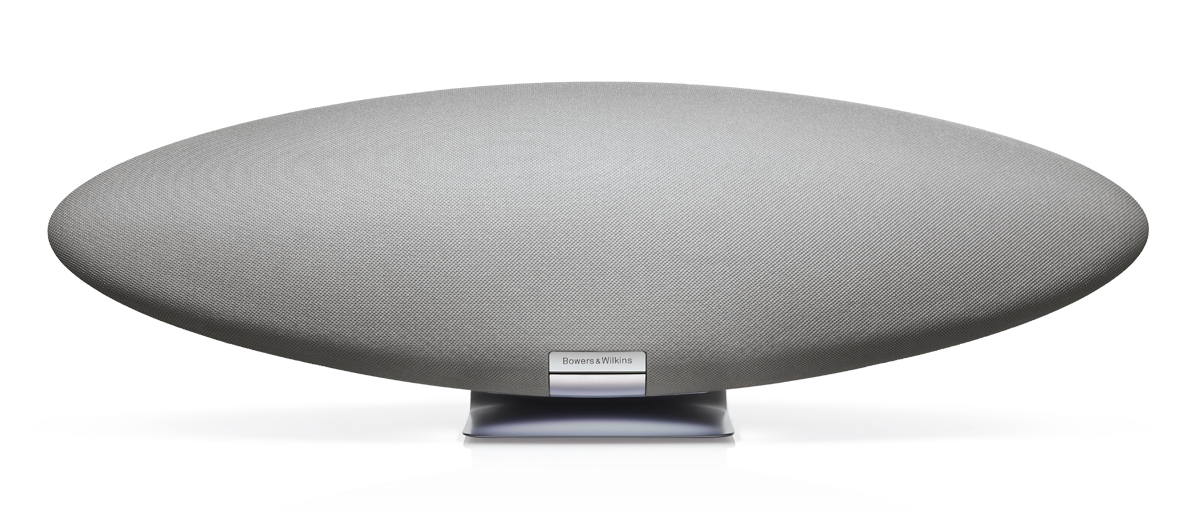
The speaker sits on a sculpted metal base, which is illuminated from above by a blue-white LED. Brightness can be adjusted in the Bowers & Wilkins app, or the light can be turned off entirely. The base can be removed, allowing the Zeppelin to be mounted on an optional wall bracket ($99).
On the rear top are five raised controls: a central Multifunction button, flanked by a circular button for turning the unit on and off, a play/pause control, and minus (-) and plus (+) buttons for adjusting volume. Recessed into the bottom rear of the speaker is a small panel with a USB-C service port, a two-prong power inlet, and a reset button.
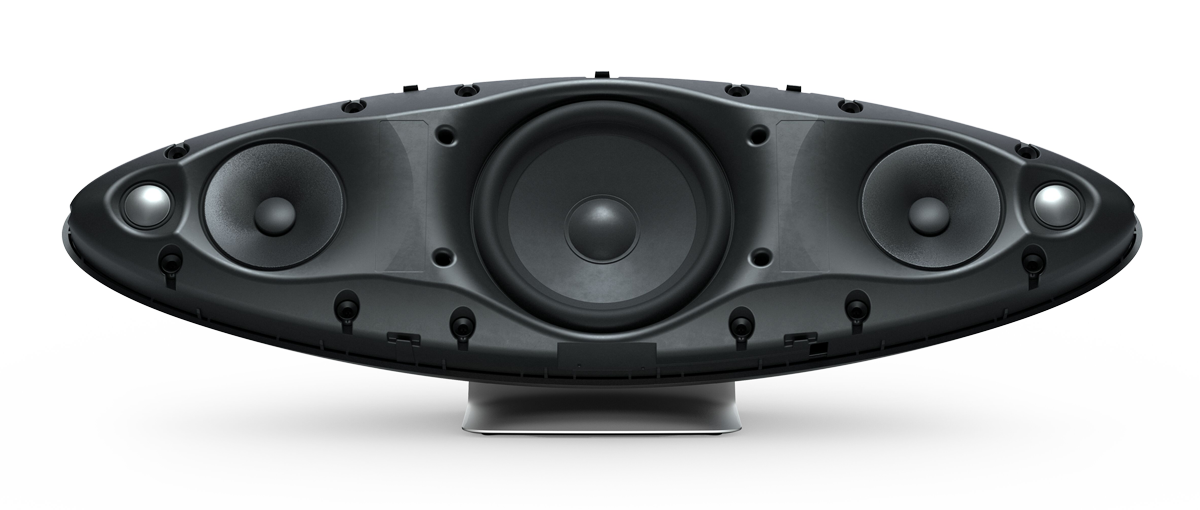
The new Zeppelin has a 1″ aluminum-dome tweeter and 3.5″ FST midrange driver for each channel. Each driver is powered by a 40W class-D amplifier. In the center is a 6″ woofer powered by an 80W amp that is shared by both channels. Andy Kerr, director of product marketing and communications, told me in an email exchange that the driver designs are derived from B&W’s passive loudspeakers:
The tweeters are Decoupled Double Dome aluminium tweeters, as used in the 600 Series Anniversary Edition. The decoupling—suspension, essentially—reduces the cabinet baffling effect and also reduces unwanted coloration caused by resonance transfer from the larger drive units in the structure. The tweeter dome itself is made from two sections: a 30-micron primary diaphragm braced around its periphery by a 50-micron dome with its centre portion removed. The combination of the two elements pushes away the moment of first break-up to 38kHz (30kHz in a regular single-diaphragm dome). The intent is to ensure cleaner output in the audible range.
The midrange drive units are a composite cone material. FST stands for Fixed Suspension Transducer: it’s an established Bowers & Wilkins technology that has been deployed for many years on our three-way loudspeakers, including our flagship 800 Series Diamond models. Midrange cones move only a little relative to mid-bass cones, which allows us to utilise a surroundless suspension, which improves outer cone edge behaviour relative to a standard cone. This results in lower coloration.
The crossover is implemented in DSP, which also performs EQ to obtain an optimum tradeoff between bass extension, maximum output, and distortion. The Zeppelin can accept hi-rez streams up to 24-bit/96kHz PCM, but the DSP runs at 24/48.
The new Zeppelin supports Spotify Connect, allowing users to cue up music in the Spotify app, then transfer playback to the speaker. It does not support Tidal Connect. Tidal can be accessed through the Bowers & Wilkins Music app, along with other supported services (Deezer, Qobuz, TuneIn, Last.fm, Soundcloud, Dash Radio, and NTS Radio). Currently, the Zeppelin does not do MQA decoding. “We are currently working on our next steps for Tidal, which will include MQA implementation and support for Tidal’s high-resolution service,” Kerr told me. “We hope to have this implemented later this year. We will have other services, including Amazon and Pandora, available before then.”
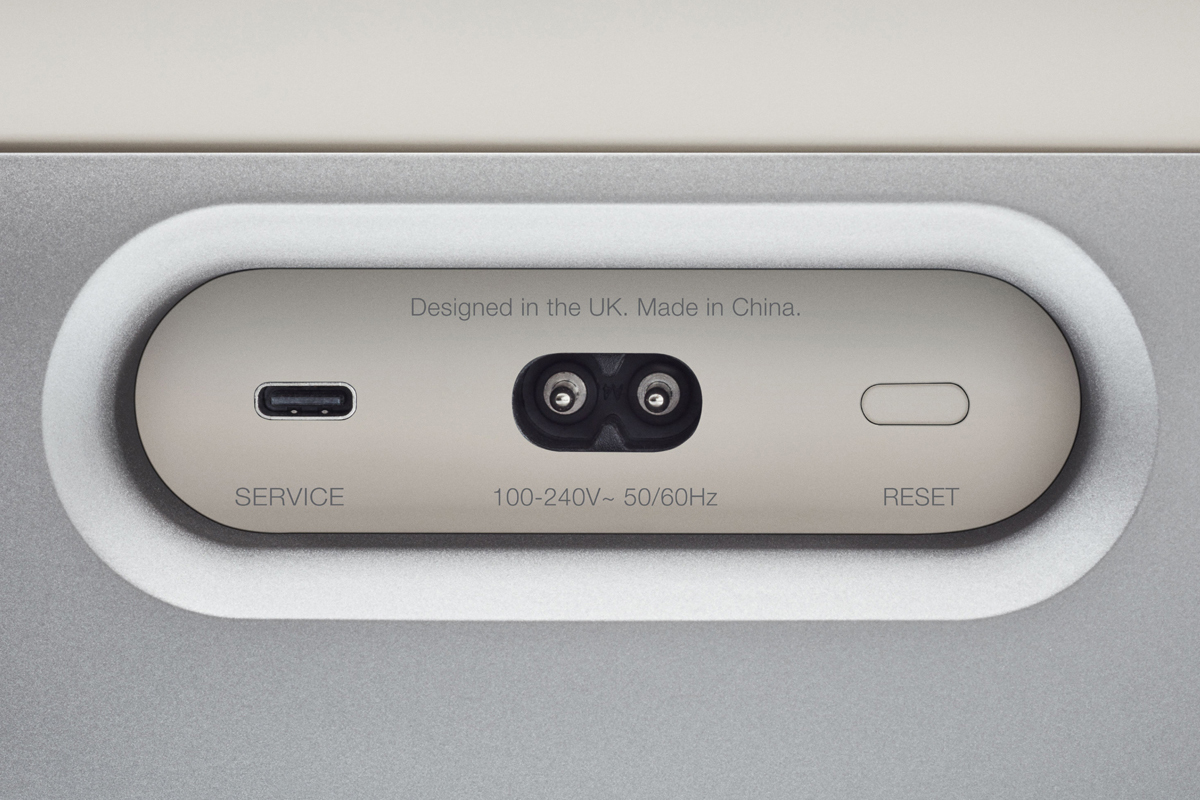
The new Zeppelin contains hardware to support multiroom playback with other new Zeppelins, as well as Formation-series active speakers such as the Formation Duo two-way standmount speakers ($4999.99/pair). When B&W announced the new Zeppelin last fall, they said this capability would be enabled in early 2022 by a software update. That had not happened by the time I was wrapping up this review in mid-March.
Setup and software
Per the Quick Start Guide, I downloaded the Bowers & Wilkins Music app to my Google Pixel 4a 5G smartphone. The app prompted me to set up a Bowers & Wilkins account. When that step was complete, the app discovered the Zeppelin and asked if I wanted to set it up. I selected Start Setup, confirmed the space where the Zeppelin was installed (Office), and, as prompted, pressed the Multifunction button on the top rear of the Zeppelin. The app displayed a list of available Wi-Fi networks, with the one used by my phone at the top. I selected that network, entered my password, and a moment later, the Zeppelin was connected. Piece of cake.
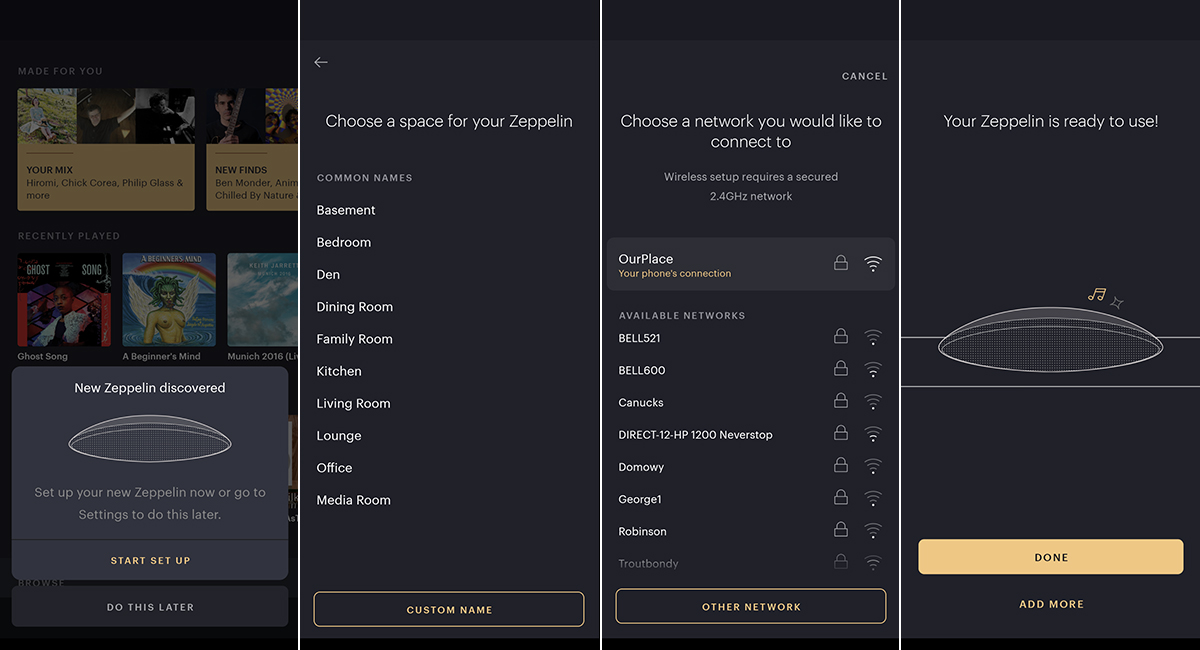
At this point, the Music app’s home screen offered to link my preferred streaming services, and in the next screen presented a list of supported services. I chose Tidal, and in the next screen entered my username and password. Now, from the home screen of the Music app, I could browse Tidal’s mixes and recommendations, and access my favorite albums, artists, and playlists. The app also presented a list of B&W curated playlists. I found the Music app to be clear and well organized.
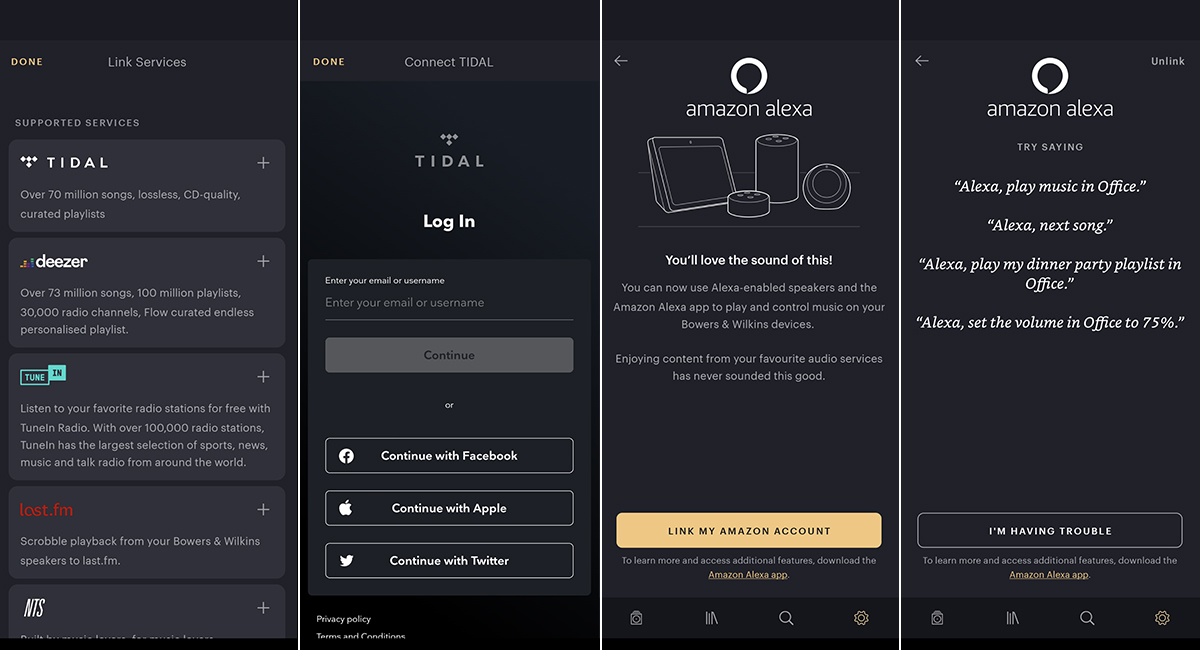
To enable Alexa support, I entered the Settings menu by tapping the little gear icon at the bottom of the home screen, then in the next screen chose the name of the room where the Zeppelin was installed (Office) and then the name I had given the device (Zeppelin). The next screen had slider controls for adjusting treble and bass, controlling the downward-facing LED, and enabling Alexa. When I chose the Alexa option, I was taken to the Alexa app on my Pixel phone, where I confirmed that I wanted to link the Zeppelin to my Alexa account.
Now I could ask Alexa to adjust the volume on the Zeppelin, play music (the first request results in a pitch for Amazon Music Unlimited), ask for a weather forecast, adjust my Ecobee smart thermostat, and control my Kasa smart light switches and AC plugs. Even with music playing loudly, the Zeppelin always detected the trigger word (“Alexa”) and lowered the volume, after which Alexa executed my request.
One minor annoyance: when the Zeppelin powers up and connects to your network, it plays a swoosh sound, which is followed by female voice announcing, “Your Alexa device is ready.” If you’d been playing music loudly, those startup sounds will be played at the same volume. It would be nice if you could program a default startup volume setting so that those sounds wouldn’t be so startling.
Listening
I placed the Zeppelin on the top shelf of the secretary desk in my second-floor home office. Its front panel was right at ear level when I was leaned back in my office chair, about 4′ away. I also listened casually while wandering around my office performing various chores, and while sitting on a convertible sofa against the wall adjacent to my desk.
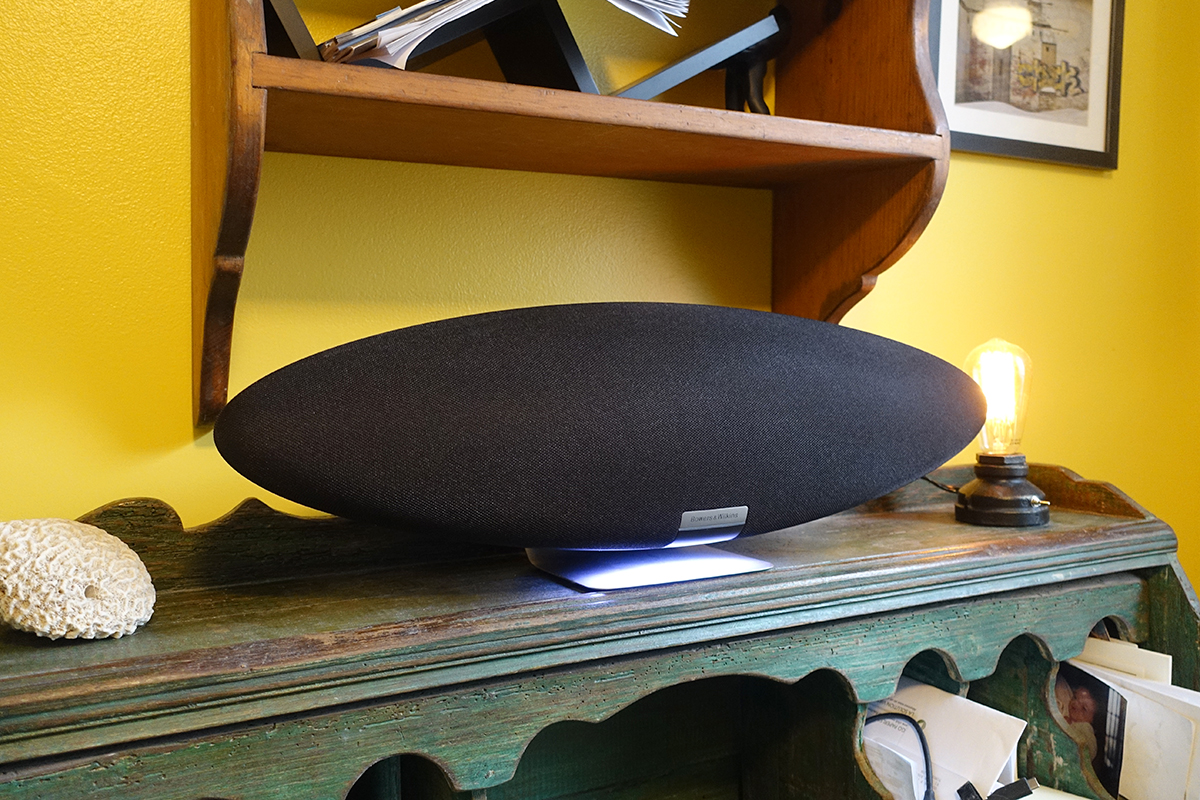
Throughout my listening, I was wowed by the scale of the sound produced by the Zeppelin. The soundstage extended above the speaker, and about a foot to either side. The Zeppelin could play very loudly without losing composure. Bass was full and deep, though a bit wooly at times. Highs were crisp and detailed, but a bit peaky at high volumes.
All those characteristics were evident when playing Jennifer Warnes’s cover of “Ain’t No Cure for Love” from the 20th-anniversary edition of her landmark album Famous Blue Raincoat: The Songs of Leonard Cohen (16-bit/44.1kHz FLAC, Impex Records/Tidal). The bass guitar riff that punctuates the song sounded big and robust, providing infectious drive and momentum. There was a bit of hollowness in Warnes’s expressive soprano voice; and during loud, high notes, some hardness crept in. Similarly, Vinnie Colaiuta’s emphatic strokes on the snare drum were a little hard-sounding.
I admired the way the Zeppelin rendered the simple accompaniment to the title track of Johnny Cash’s American IV: The Man Comes Around (16/44.1 FLAC, American Recordings/Tidal). The three guitars were well differentiated, tonally and spatially: a muted six-string in the center providing a percussive foundation to the song; and in the choruses, a twelve-string on the left and six-string on the right. The big chords on those steel-strung instruments had wonderful ringing clarity. Other than some very mild hollowness, Cash’s aging baritone voice, close-miked on this recording, was completely convincing.
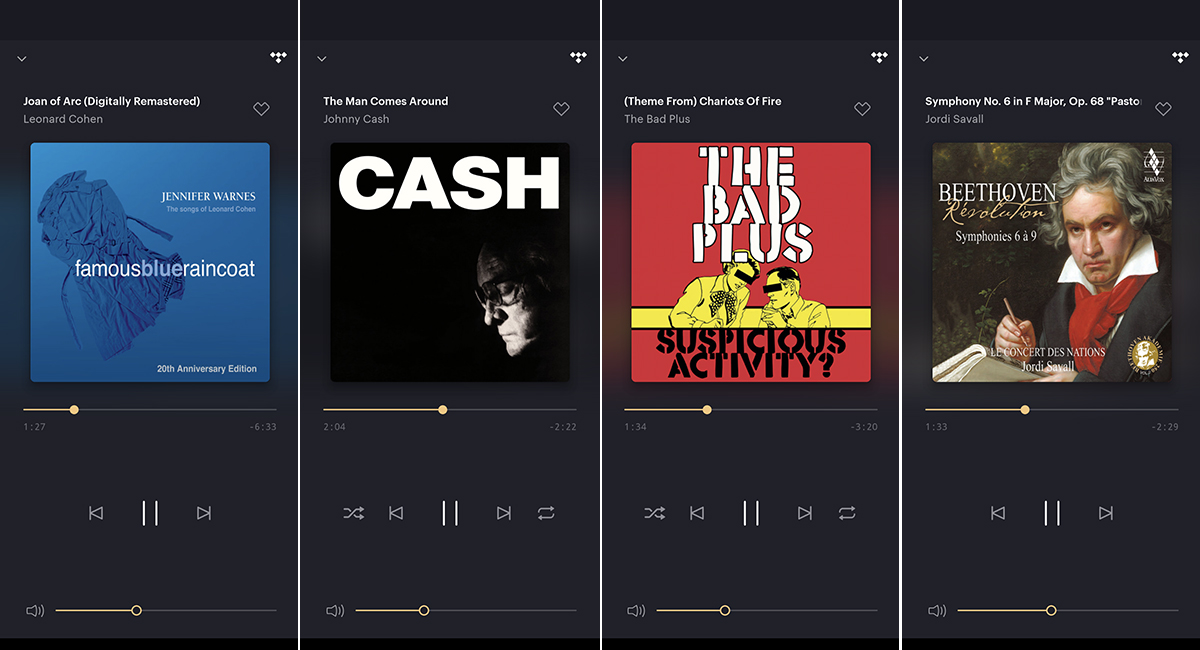
The new Zeppelin showed its bass chops in a hard-hitting cover of Vangelis’s “(Theme from) Chariots of Fire” by The Bad Plus, from their Suspicious Activity? (16/44.1 FLAC, Columbia Records/Tidal). The track begins with a long passage by double-bassist Reid Anderson and drummer Dave King, punctuated by quick two-note phrases by pianist Ethan Iverson. It sounded glorious through the Zeppelin—big, bold, and effortless. King’s emphatic kick-drum and floor-tom beats exploded into my home office without a hint of strain. Anderson’s double bass sounded just as impressive, with crisp attacks segueing into rich woody resonance.
Just before the one-minute mark, Iverson introduces the main theme of the piece. While the piano tone had wonderful clarity up top, the middle octaves were a little lacking in body. During the dense, chaotic improvisations in the middle of the track, with feral drumming by King, impossibly fast runs by Anderson, and wild keyboard ad-libbing by Iverson, the sound became a little congested; but given that this wall-of-sound section was being produced by an all-in-one tabletop music system, it was mighty impressive.
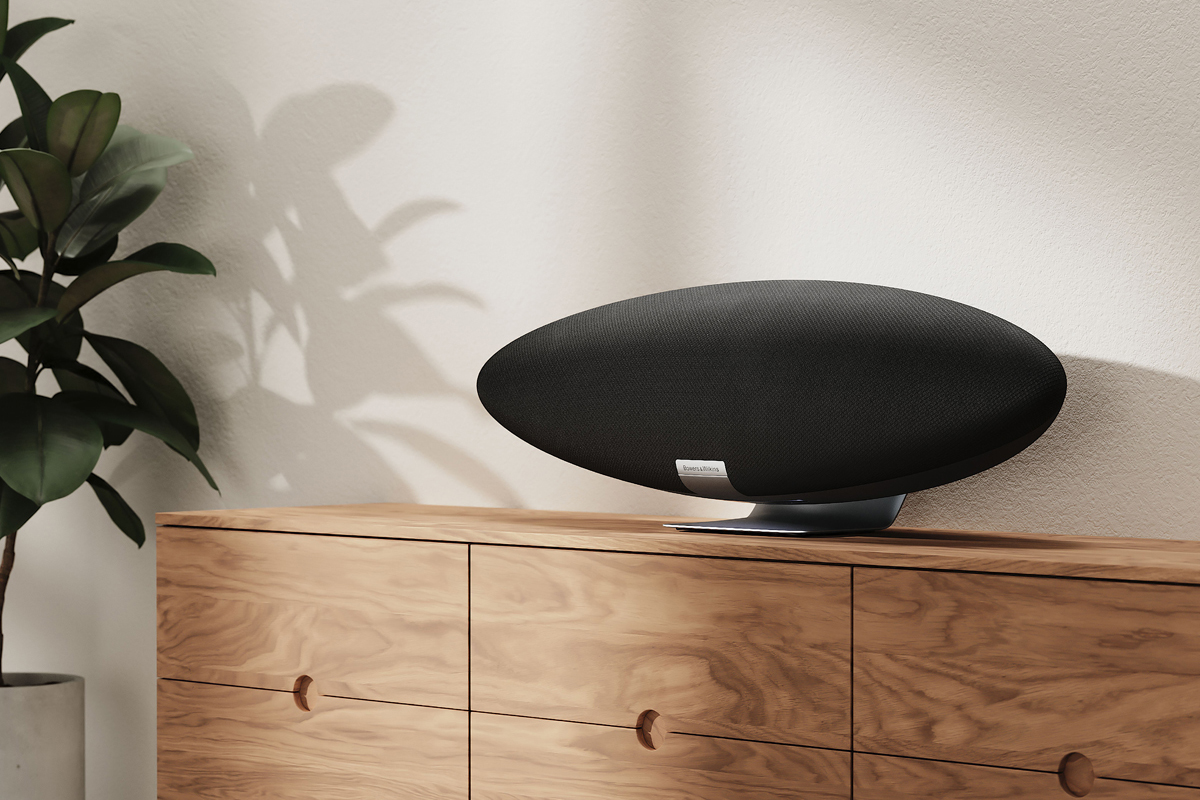
I had much the same response listening to a period-instruments recording of Ludwig van Beethoven’s programmatic Symphony No. 6 in F major, “Pastoral,” by Le Concert des Nations conducted by Jordi Savall (16/44.1 FLAC, Alia Vox/Tidal). The growling double basses and cellos at the beginning of the fourth movement, “Donner, Sturm,” meant to evoke an impending storm, sounded deep and full; although the tone of the basses was a little indistinct. Playing above the basses and depicting falling raindrops, the antique violins were delectable, with a silvery-sweet tone.
Thirty seconds in, the storm begins in earnest, with timpani, strings, trombone, and piccolo evoking thunder, lightning, rain, and howling winds. Timpani thwacks were huge and threatening, though slightly bloated; and the piccolo was a bit shrill. Despite some congestion, I thought what this all-in-one system did with this demanding passage was pretty amazing.
Comparisons
During the review period, I didn’t have access to a current tabletop system that would serve as a comparison for the new Zeppelin, so I used the NAD Viso 1 iPod speaker I bought as a Christmas gift for my wife a decade ago. Introduced in 2010, the Viso 1 competed head-to-head with the original Zeppelin. It has a 2.75″ driver powered by a 15W amp for each channel, plus a shared 5.9″ woofer powered by a 50W amp. I played lossless CD-resolution files from a third-generation iPod Touch inserted into the Viso’s rotating dock.
Playing Jennifer Warnes’s cover of “Ain’t No Cure for Love” through the Viso 1, it was more obvious that I was listening through a tabletop system. The soundstage was more confined—it didn’t extend above or beyond the speaker the way it did with the new Zeppelin. Dynamics were more compressed. The drums were less impactful, and the bass guitar was not as deep or full. But the hardness I heard on Warnes’s voice on the Zeppelin was not evident on the Viso 1. The Viso was a little smoother, but the Zeppelin was more exciting and involving, with bolder dynamics, deeper bass, and greater spaciousness.
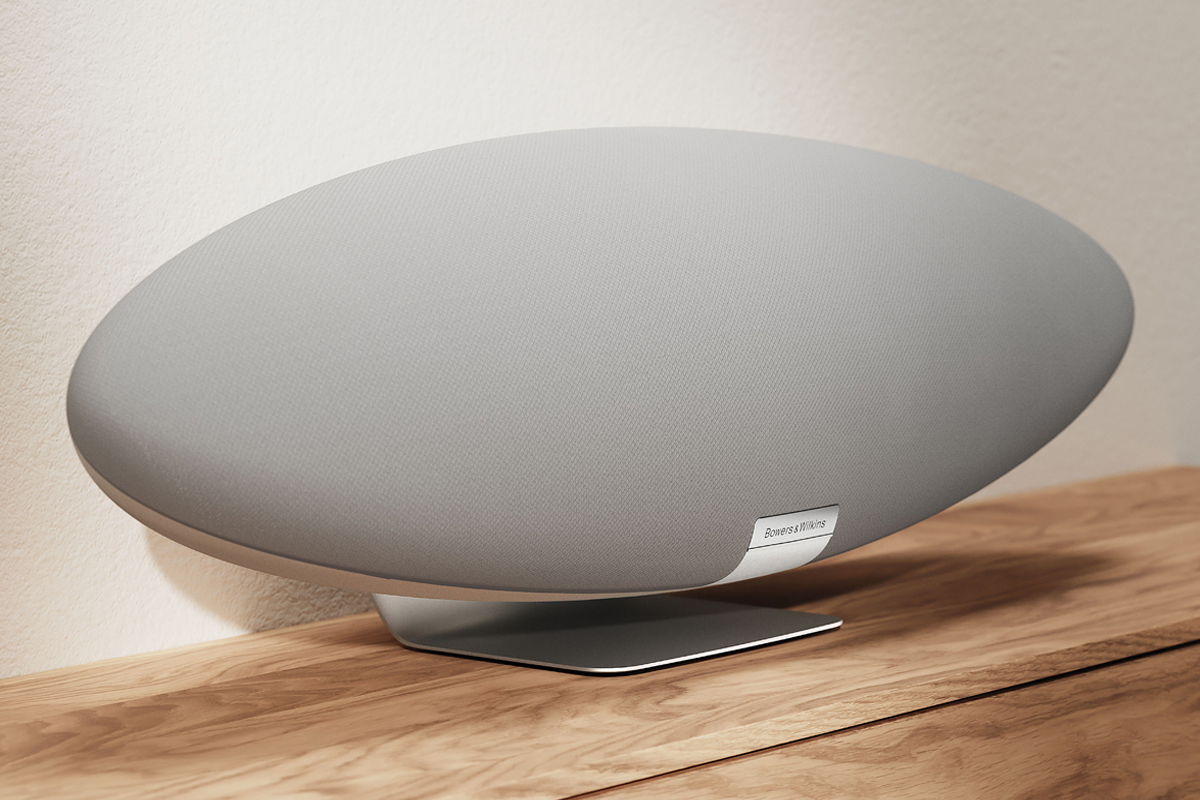
I also compared the Zeppelin with my new desktop audio setup, a pair of Q Acoustics Q Active 200 active loudspeakers ($1499/pair) placed atop IsoAcoustics ISO-155 speaker stands on the top shelf of my secretary desk, on either side of the Zeppelin. Each Q Active 200 speaker houses two front-facing 2.25″ balanced-mode radiator drivers, each powered by a 20W class-D amp, and a rear-facing 4.5″ woofer powered by a 50W class-D amp.
Playing The Bad Plus’s rendition of “(Theme from) Chariots of Fire,” attacks were crisper through the Qs, so that I was more aware of King’s sticks hitting the floor tom and the mallet hitting the kick drum. Similarly, Anderson’s plucks on double bass were better defined on the Qs, woolier on the Zeppelin. Not surprisingly, the Qs resolved the different strands in the dense improvisational sections a little more clearly than the Zeppelin; but I think that’s mainly because of the form factor. But the overall impact was similar—this track sounded really exciting on both systems. The takeaway here is that the all-in-one Zeppelin held its own against a true stereo active system that costs almost twice as much.
Conclusion
The original Zeppelin was a groundbreaking product, and Bowers & Wilkins’s new Zeppelin is an eminently worthy successor. The software is solid and easy to learn, with integrated support for lossless services like Deezer, Qobuz, and Tidal. The new Zeppelin’s Alexa functionality is a very welcome bonus.
I’ve picked a couple nits about the sound, but the fact is I really enjoyed listening to the new Zeppelin. It filled my home office with sound bigger and more powerful than I would have expected from an all-in-one tabletop music system. In short, the new Zeppelin is an iconic product, fully updated for the streaming era.
. . . Gordon Brockhouse
Associated Equipment
- Music player: NAD Viso 1 with third-generation Apple iPod Touch.
- Active speakers: Q Acoustics Q Active 200.
- Control devices: Google Pixel 4a 5G and Apple iPhone 8 smartphones.
- Network: Google Wifi four-node mesh network.
Bowers & Wilkins Zeppelin Wireless Music Player
Price: $799.
Warranty: Two years, parts and labor.
B&W Group
Dale Road
Worthing BN11 2BH
United Kingdom
Phone: +44 1903 221800
Email:
Website: www.bowers-wilkins.com
Bowers & Wilkins North America
5541 Fermi Court
Carlsbad, CA 92008
United States
Phone: (800) 370-3740



